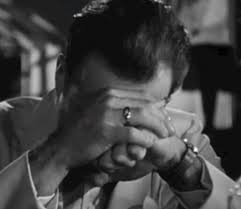The Mid-Point Moment
Your novel’s midpoint is often compared to the center pole on a circus tent. Without it, you get a long, sagging middle supported only by the first and second plot points, which are too far apart to hold your reader’s attention.
Larry Brooks, author of Story Engineering, suggest the midpoint be a revealing, or lifting of the curtain. The reader, and maybe the protagonist, get a glimpse of what we’re really up against. The destruction of Leah’s home planet in Star Wars is a good example. Note this is necessary so that the viewer will know why the last fifteen minutes of the film are so critical. If we hadn’t seen that planet blow up, the rebels may only be in for real nasty eclipse.
James Scott Bell, on the other hand, author of Plot & Structure, identifies the midpoint as the “man in the mirror” moment. It’s when your protagonist looks deep inside himself and usually doesn’t like what he sees. If you attend a presentation by Bell, he uses several films for his examples. My personal favorite in this case was from Casablanca. In the midpoint scene, Rick just gets through calling Ilsa a whore (not his exact words, but in a really cool, Bogey way). Rick, of course, is still in love with Ilsa, but he’s learned to keep his feelings bottled up. Ilsa runs out and we’re left alone with Rick, who realizes what a total schmuck he’s become. No words are spoken at this point. We just see Rick, alone, burying his head into his fists.
No viewer would identify that as the critical midpoint, but she knows something has just changed. Rick has taken a “look in the mirror” and didn’t like what he saw there.
Which midpoint do I use?
My question, when I saw these two variations on the midpoint, is this: which do I use? Can I use both? Can I have a man in the mirror moment along with the exploding planet?
That depends on the story. In Star Wars, Luke Skywalker was a likable character from the beginning. He was a bit fearful of his uncle, but nothing that required any soul searching on his part. The action was mostly external. Good thing, because it’s primarily an action-adventure flick.
In Casablanca, most of the action is internal. Rick is a character with emotional baggage. The Nazis are only a minor inconvenience compared to what’s brewing inside Rick’s bruised and beaten heart. When the action is internal, we need the man in the mirror.
Some novels or movies do use emotionally troubled heroes right along with an action-adventure plot. In The Patriot, Benjamin Martin struggles with his past “sins” committed in the French-Indian War while at the same time fighting a new war. At the movie’s midpoint, we see Benjamin melting down the last of his son’s lead soldiers to make a bullet. The use of symbolism is stunning. The lead soldier represented a more peaceful time, when Benjamin’s biggest struggle was to build a working rocking chair. Upon melting the soldier, he was leaving behind any hope of return to that chapter of his life and, in doing so, accepted his role as soldier for the revolution.
Let the Genre decide
Some genres make the choice simple. If you’re writing romance, you need the man (or woman, or both) in the mirror. If you’re writing thrillers, you’ll almost always have the exploding planet. Other genres, like mysteries, can go either way. I hate the term “character driven story,” because all plots need to be both character and plot driven, but to make matters easier, I’ll play along.
In a character driven story, where your protagonist and her past are the biggest obstacle in reaching her goal, then you’ll use the “man in the mirror” for your midpoint scene.
In a plot driven story, where the biggest obstacle is the physical antagonist or antagonistic forces, then the exploding planet is the better option. Give your reader a sneak peak of your antagonists real power. This is especially useful in a suspense novel where we’re not sure what the protagonist is up against. Maybe a scene showing your serial killer clipping on his police badge.
What about both? Can you have an exploding planet and man in the mirror together? I suppose it’s possible. If Luke’s shortcomings had somehow allowed the destruction of the planet to take place, then he’d have his man in the mirror moment after discovering the destroyed planet. The ten year old boys who made up the majority of the movie audience, however, would not have had much patience with an emotional hero (which is why I hated Anakin Skywalker).
So do yourself a favor. Go to the mid-point of your novel. Do you have an exploding planet or man in the mirror moment? Think about your hero or heroine. Decide what solution you need and write it. You’ll find the middle of your novel stronger, giving much needed support to carry you, and your reader, to the end.
